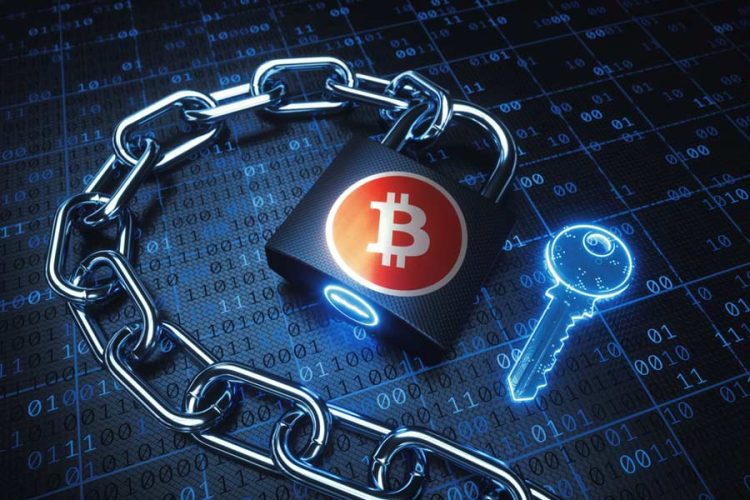Introduction: The Collapse of Traditional Certainties
The global financial order is undergoing a profound transformation. In a world plagued by climate crisis, de-dollarization efforts, digital surveillance, and institutional fragility, traditional financial instruments—stocks, bonds, fiat currencies—are no longer sufficient to provide protection against systemic shocks. We are entering an era where resilience is the new alpha.
Within this context, two unconventional asset classes are rising in parallel—and beginning to intersect: cryptocurrencies, and carbon credits. Though seemingly unrelated—one digital, the other environmental—they are converging into a new architecture of defense, one that offers not only financial returns but strategic, sovereign, and ecological value.
This is not just about innovation. It is about survival.
1. Alternative Assets as Strategic Shields
The term “alternative assets” has expanded dramatically over the last decade. It once referred mainly to hedge funds, private equity, and real estate. But today, it encompasses:
- Digital assets (Bitcoin, Ethereum, stablecoins)
- Environmental credits (carbon allowances, offsets, biodiversity tokens)
- Tokenized commodities and synthetic derivatives
This shift is being driven by fundamental pressures:
- Macroeconomic fragility: Central banks have printed unprecedented volumes of currency, eroding trust in fiat systems.
- Geopolitical re-alignment: Sanctions, trade wars, and supply chain nationalism have forced capital to become more agile and stateless.
- Climate imperative: As emissions regulations tighten, carbon-intensive operations face direct financial consequences—making CO₂ itself a priced asset.
What ties these assets together is their defensive function. They protect against inflation, centralization, ecological breakdown, and systemic collapse. They enable a new kind of sovereignty—financial, environmental, and computational.
2. Cryptocurrencies: Fortress Capital in a Post-Trust World
Cryptocurrencies are the flagship of decentralized finance (DeFi). Far beyond speculative instruments, they serve as sovereign financial infrastructure—open, censorship-resistant, and globally liquid.
Bitcoin: The Monetary Base of Cyberspace
Bitcoin is designed as a self-limiting monetary system with a fixed supply and transparent issuance schedule. This makes it fundamentally deflationary—a feature, not a bug—in a world saturated with monetary expansion. Its lack of central authority provides immunity to seizure, debasement, or politically motivated manipulation.
It is already being used by:
- Nations (e.g., El Salvador) for sovereign reserves
- Dissidents in authoritarian regimes
- Investors hedging against monetary inflation
Ethereum and Smart Contract Ecosystems
Ethereum expanded the logic of crypto from “money” to “machine.” With programmable contracts, decentralized protocols now offer:
- Lending and borrowing without banks
- Automated insurance
- Synthetic exposure to commodities, stocks, and even carbon credits
This is not just finance—this is financial code as infrastructure, running 24/7, immune to borders and banking hours.
3. Carbon Credits: Environmental Scarcity as Capital
The carbon market is arguably the most important financial innovation of the climate era. It transforms pollution into a priced externality, forcing emitters to internalize the cost of CO₂.
Compliance and Voluntary Carbon Markets
Two systems dominate:
- Cap-and-trade programs (like the EU ETS, California’s market): Emission limits are set, and firms trade allowances under those caps.
- Voluntary carbon offsets: Corporations purchase credits to “offset” emissions via reforestation, carbon capture, or renewable projects.
As these systems mature, carbon credits are becoming:
- Scarce assets with increasing prices
- Regulatory hedges against future compliance costs
- Green reserves that companies and countries accumulate for strategic leverage
Carbon is no longer just a liability—it is emerging as a strategic commodity.
4. Tokenizing Carbon: The Decentralized Climate Economy
The convergence between crypto and carbon is most visible in the rise of tokenized carbon assets. These are digital representations of verified carbon offsets, issued and traded on blockchain networks.
Why Tokenize Carbon?
- Transparency: Blockchain ensures audit trails for each ton of carbon, combating fraud and double counting.
- Liquidity: Tokenization enables trading of small, fractionalized positions on global DeFi markets.
- Programmability: Smart contracts can enforce automatic retirement, escrow, or yield generation tied to environmental goals.
Platforms like KlimaDAO, Toucan, and Regen Network are pioneering this movement, linking DeFi mechanisms with planetary outcomes. These projects aim to democratize access to environmental finance while ensuring greater trust and accountability.
5. The New Defense Chain: Crypto-Carbon Integration
Together, cryptocurrencies and carbon credits form a layered defense chain:
- Digital assets preserve capital sovereignty and escape velocity from centralized collapse.
- Carbon credits defend against regulatory exposure and climate-induced financial risks.
- Smart contract automation ensures decentralized control and coordination at scale.
In this system:
- A Bitcoin reserve is a hedge against currency debasement.
- A tokenized carbon vault is a hedge against environmental risk and policy shifts.
- A DAO managing both can operate outside state jurisdiction, with its own rules, currency, and ecological footprint.
This defense chain doesn’t just hedge—it builds counter-power.

6. Global Players in the Shadow War
This financial transformation is not theoretical—it is unfolding in real time, with powerful actors repositioning rapidly.
Sovereigns
- China bans crypto yet dominates the global carbon market through aggressive cap-and-trade expansion and green bond issuance.
- United States is normalizing crypto regulation while moving toward a federal carbon pricing mechanism.
- Gulf States leverage oil surpluses to invest in both crypto infrastructure and carbon-negative technologies, hedging both energy and climate risk.
Financial Institutions
- BlackRock, JPMorgan, and BNP Paribas are rolling out ESG-focused crypto products and carbon credit derivatives.
- Venture capital is flowing into “ReFi” (regenerative finance) startups that build bridges between DeFi, nature-based solutions, and carbon economies.
Decentralized Autonomous Organizations
DAOs like KlimaDAO act as decentralized carbon central banks. They buy and lock carbon credits into smart contracts, reducing supply and driving up price to increase climate cost visibility. Others like Gitcoin and Regen Network coordinate regenerative financing with code and community.
7. Risks: Structural and Strategic Weaknesses
While the crypto-carbon nexus offers revolutionary tools, it is not without its own fragilities.
Regulatory Threats
Governments may crack down on anonymous trading, crypto-fiat bridges, or voluntary carbon markets deemed non-compliant. Legal clarity remains patchy, creating enforcement gaps and uncertainty.
Market Volatility
Crypto remains volatile, with wild price swings disrupting confidence. Carbon markets also suffer from inconsistent pricing, illiquidity, and manipulation—especially in under-regulated regions.
Greenwashing and Verification Gaps
Not all carbon credits are legitimate. Blockchain can trace movement, but cannot verify field-level integrity without trusted oracles and governance. Bad actors may exploit complexity and opacity.
Tech Bottlenecks
Bridging real-world data with blockchain securely and scalably is still unsolved at scale. Latency, security vulnerabilities, and smart contract bugs remain technical barriers.
8. The Future: Toward a Sovereign-Resilient Financial System
What lies ahead is a profound transformation in how value, power, and sustainability intersect.
- Carbon may become a reserve asset, held by nations like gold or oil, as ecological scarcity becomes monetized.
- Bitcoin and stablecoins may become transactional backbones of future trade systems, especially among nations bypassing the dollar.
- Smart contracts and DAOs may administer everything from climate finance to development loans—algorithmically, transparently, and without political strings.
This is not merely innovation—it is an emerging geo-financial operating system. Those who architect and adopt this system will control not just money, but meaning—what we choose to value, protect, and build toward.
Conclusion: Crypto and Carbon as Strategic Intelligence
In a fragmented, fragile world, defense no longer lives only in armies, missiles, or borders. It lives in code, consensus, and climate resilience. Cryptocurrencies provide an escape from the old guard of inflation, control, and collapse. Carbon credits put a price on the planetary emergency, and offer the chance to hedge, repair, and realign.
Together, they do not merely shield value—they redefine it. The war for the future is already underway. And the most powerful weapons may not be kinetic—but cryptographic, ecological, and algorithmic.














































